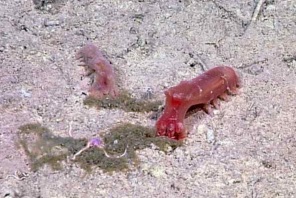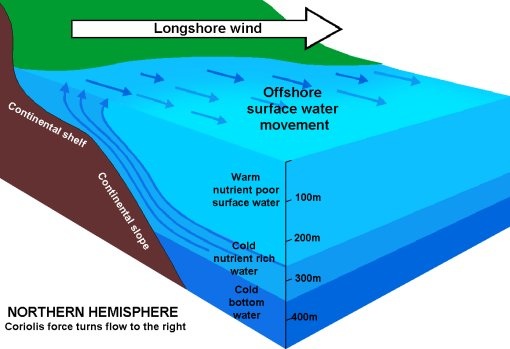By Catherine Drake, Invertebrate Zoology Lab
One of the many great aspects about doing marine research in Monterey Bay is that there are many institutions in the area, all of which are interested in uncovering the unknown about our Pacific Ocean. Many Moss Landing Marine Labs graduate students often continue their careers at these institutions. In fact, right down the street from our lab is Monterey Bay Aquarium Research Institute (MBARI for short), and many former graduate students now work there. Much of the research performed at MBARI involves taking ROVs into our canyon and exploring what lies beneath the water we see from MLML's windows.

For the last 25+ years, scientists at MBARI have been monitoring a site deemed “Station M” within the Monterey Canyon that is 126 miles offshore and 2.5 miles below the surface. For 20 of those 25 years, the ecosystem has been relatively stable and sponges were the dominant invertebrates in the area.
Then, between 2011 and 2014, scientists noticed that sea cucumbers immigrated into Station M and out-competed the sponges. One interesting fact about these squishy deep sea echinoderms is that, in addition to inching along like caterpillars, they can actually also swim around! They rely on sinking and decaying detritus for food, and increased decaying plant life around Station M is what allowed the sea cucumbers to take over.
But why was there a sudden increase in food, and where did it come from? These were among the questions asked by MBARI scientists, and they believe the decaying plant life may have been pushed into the system through upwelling. Seasonal winds cause upwelling, which brings cold, nutrient rich waters to the surface. Scientists believe that climate change is causing an increase in these winds, which in turn, is increasing the frequency of upwelling.
Christine Huffard, a scientist on the project said, “What we do on the surface waters does affect the deep sea. We are not just changing our immediate everyday surroundings, we are changing the greatest depths of the ocean.” So, as we humans heat up the Earth, that changes how the ocean works, which then affects even the deepest part of our canyon. For its inhabitants, that means more food for sea cucumbers, and for us, it means food for thought of our actions on land!


